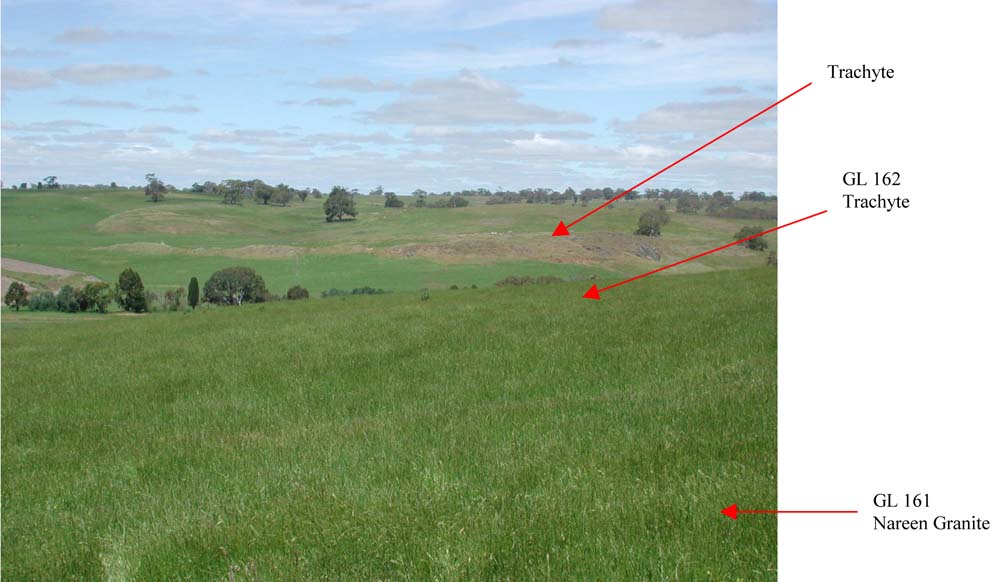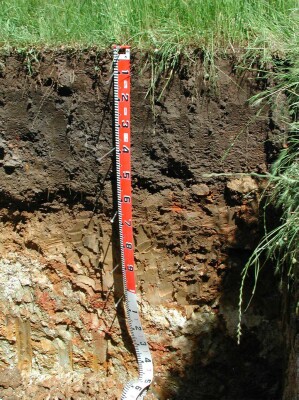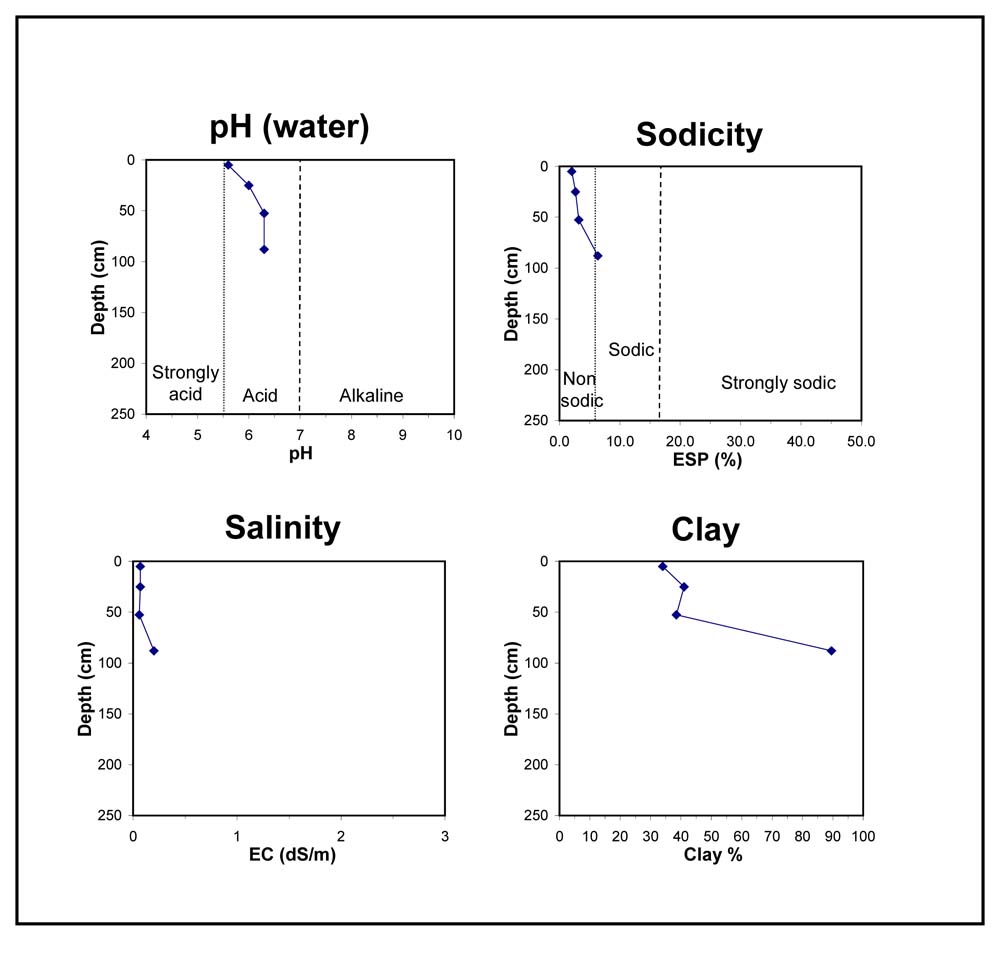GL162
| Site: GL162 | Land Unit: Dundas Trachyte |
| Aust. Soil Class.: Melanic, Mottled-Subnatric, Brown SODOSOL (confidence level 1) | |
 | General Land Unit Description: There are a few isolated outcrops of Jurassic trachyte in the north-western portion of the study area, with the largest outcrop being north east of Coleraine. There are also some colluvial slopes on the edge of trachyte outcrops around the Dundas and Merino Tablelands. The trachyte hills often have rock outcrop and reasonably shallow soils on the crests and upper slopes. The main soil type on the upper slopes is a Brown Sodosol although Chromosols also occur and they are commonly sodic at depth. The soils on the colluvial slopes tend to be black cracking clays (Vertosols) or Black Vertic Sodosols. These soils are similar to the black soils of the dissected Merino Tablelands land unit. The soils on these slopes are a complex mix of different soil forming processes. This site is located on the edge of a small band of Trachyte, below granite (GL161). Rock outcrop is evident. A Trachyte hill is opposite this site. This site is an example of the common soil type that occurs to the north of the study area. The soils on the low hills and rises that have outcropping bedrock tend to be similar to this soil type although they are often shallower. |
Site Description:
| Slope: 8% | Geology: Jurassic tracyte |
| Landform pattern: Undulating rises | Position in landscape: Upper slope |
| Internal drainage: Imperfectly drained |
Soil Profile Morphology
| A11 | 0-10 cm | Very dark grey (10YR3/2) clay loam, weak to medium subangular blocky structure (5-50 mm), firm consistence when dry, very few small subangular to angular trachyte pebbles (2-6 mm), pH 5.6; diffuse transition to: |  |
| A12 | 10-40 cm | Black (5YR2.5/1) clay loam, weak subangular blocky structure (5-20 mm), firm consistence when moist, very few small subangular to angular trachyte pebbles (2-6 mm), pH 6.0; clear but wavy transition to: | |
| A13 | 40-65 cm | Dark reddish brown (10YR3/2) light clay, weak subangular blocky structure (20-50mm) to strong granular structure (<2 mm), weak consistence when wet, very plastic when wet, very few large subangular blocky trachyte pebbles (20-60 mm), pH 6.3; clear and wavy transition to: | |
| Subsoil | |||
| B2 | 65-110 cm | Olive brown (2.5Y4/4) heavy clay, many distinct medium yellowish brown (10YR5/6) mottles, medium polyhedral structure (5-20 mm), very plastic consistence when wet, very few large subangular blocky trachyte pebbles, pH 6.3; clear to abrupt and wavy transition to: | |
| C | 110-150 cm | Weathered Trachyte |
Key profile features:
- Deep organic topsoil
- Strong texture contrast between topsoil and subsoil
- Mottled subsoil
- Marginally sodic subsoil
- Deeper topsoil dispersive when worked when wet



